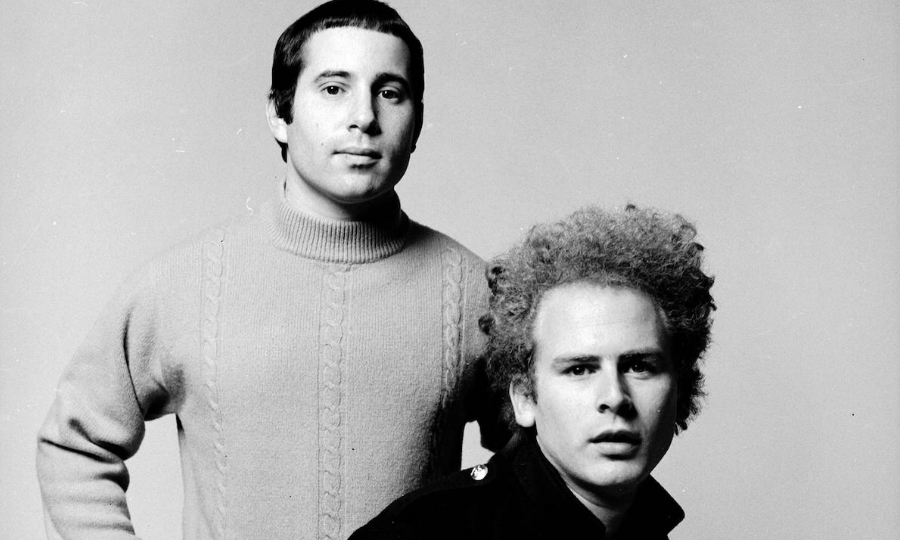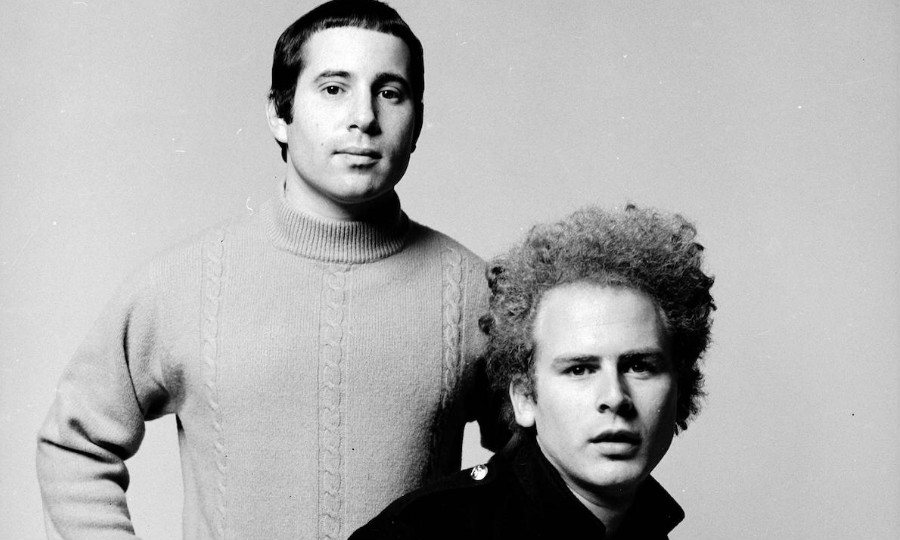Bridge Over Troubled Water was Simon & Garfunkel’s swan song, but even as the duo’s bond began to decay they created a transcendent work of unparalleled craftsmanship.
In the Spring of 1969 racial tensions were erupting across America and the country was beset with chaos. Bobby Kennedy and Martin Luther King Jr. had just been assassinated and sensitive songwriter Paul Simon had no other choice but to search for some words of solace.
The creative partnership that had bloomed throughout the inception and construction of the duo’s four prior albums literally consumed itself in the making of Bridge Over Troubled Water. The architecture of this delicately textured album was in stark contrast to the deafening rock revolution of the 1960s and ensured the legacy of Simon and Garfunkel, even as they fell apart.

Simon & Garfunkel’s Bridge Over Troubled Water became a signpost for their demise at the height of creative and songwriting powers.
As Paul Simon stared out across East River from his New York Apartment he longingly sang the opening line that had been barbed in his brain like a thorn for weeks. ‘When you’re weary/ Feeling small/ When tears are in your eyes/ I will dry them all.’ He especially liked how the melody to the second couplet echoed one of his favourite Bach chorales.
Though after that promising start, Simon was stumped.
“I was stuck for a while,” Simon admits. “Everywhere I went led to somewhere I didn’t want to be.”
The inspiration to finish his “humble little gospel song” came from Southern gospel group the Swan Silvertones:“Every time I came home, I put that record on, so it was in my mind. I started to go to gospel chord changes and took the melody further. Then there was one song where the lead singer was scatting, and he shouted out: ‘I’ll be your bridge over deep water/If you trust in my name.’ And, well, I guess I stole it.”
Simon was excited to play the song for eclectic comrade Art Garfunkel, whose tenor choirboy voice would perfectly suit the songs sustained high notes and sweeping melody.
“He didn’t want to sing it,” Simon told Rolling Stone in 1973. “He couldn’t hear it for himself. He felt I should have done it. And many times I’m sorry I didn’t do it.”
In a classic two-sides-to-every-story scenario, Garfunkel recalls it differently, “When Paul showed me Bridge Over Troubled Water, he did say it was for me. And I loved the song immediately. My way of saying thank you was: ‘Are you sure? Because you sound lovely singing it, and it’s almost like you could do it…’
Within a week the duo were in Hollywood’s famous CBS Studios with session wizard Larry Knechtel sculpting the finer points of the songcraft. It was soon obvious that Simon’s two verse tune wasn’t quite complete.
“It was supposed to end with the second verse,” Garfunkel recalls, “but there seemed to be a promise of what could be if Paul were to extend the song: the whole production could open up, and we could make a record with real size.”
“We modelled it after the Righteous Brothers’ Ol’ Man River, where Phil Spector holds back his production until the last line. What a neat thing, to save it, save it, save it, then give ’em the kitchen sink.”
In a fever, Simon wrote a third verse creating room and adding tension for the climax which included two bass parts, vibraphone, horns, a string section, and a thunderous beat from Wrecking Crew drummer Hal Blaine recorded in an echo chamber for a natural hall reverb.
Simon and Garfunkel were so possessed by passions that they had to decline several invitations to perform, including at the landmark Woodstock Festival.
The diverse album revealed the roots of Paul Simon’s ensuing appropriation of African and South American rhythms into pop songwriting. While El Condor Pasa (If I could) is centuries old, Simon came to it with new English lyrics and a contemporary Peruvian group called Los Incas.
Flowing down the river to Keep The Customer Satisfied with big blasts of brass, and Baby Driver careening in R&B, and Cecilia stripping back to handclaps and whistles. The diversity of influence hear lends the album its many colours and the bridge its immovable foundation.
Bridge Over Troubled Water spent six weeks at #1 in The US and three weeks in the UK. It blitzed the Grammys in 1971 claiming an unprecedented six awards including Song Of The Year and Record Of The Year.
Sadly, the song of fellowship contributed to the duo’s break up less than a year later.
“Many times on stage, when I’d be sitting off to the side… and Artie would be singing it, people would stomp and cheer when it was over, and I would think: ‘That’s my song, man. Thank you very much. I wrote that.’” Simon recalls.
“In the earlier days, when things were smoother, I never would have thought that, but towards the end when things were strained, I did.”
In hindsight, Garfunkel remembers the parting more blissfully,
“We’re strong in our musical opinions, and we’ve had lots of differences, but we’ve remained pretty damned gentlemanly all the way.”
“I’ve sung it 6,400 times,” he adds. “And every time, I get a little visitation of the power of a great song. To say: ‘Whoever you are, if you need some solace, I will try to be a moment of sweetness for you,’ this kills me. To be the lucky one to express that, it moves me every damned time.”
Nonetheless, Bridge Over Troubled Water remains an end of an era document. The end of Simon & Garfunkel, the ideals of the sixties, the folk renaissance, and the sound of silence.
While you’re here, check out Why It Mattered:
- Pink Floyd’s ‘Ummagumma’
- Pink Floyd’s ‘The Wall’
- King Crimson’s ‘In The Court Of The Crimson King’
- David Bowie’s ‘David Bowie’
- David Bowie’s ‘Hunky Dory’
- The Grateful Dead’s ‘Live/Dead’
- The Allman Brothers Band’s self titled debut
- Led Zeppelin’s ‘Led Zeppelin II’
- Michael Jackson’s ‘Thriller’
- The Rolling Stones’ ‘Let It Bleed’
- The Clash’s ‘London Calling’
- AC/DC’s ‘High Voltage’



